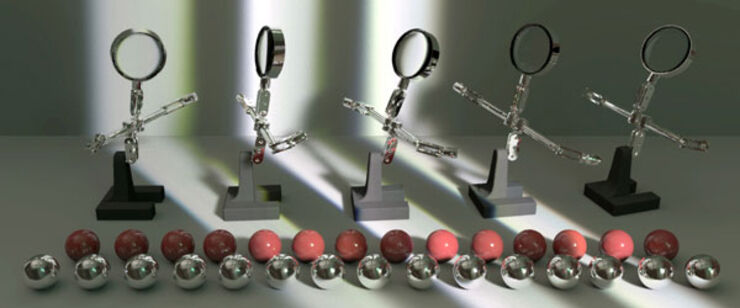The IBL scene capture is based on a 4 Mpixel global shutter HDRv camera with a dynamic range of more than 10.000.000 : 1 at 30 fps. The image displays the HDRv camera in a real-time light probe (RTLP) setup. The camera is capturing the environment through the reflection in a mirror sphere. This yields a close to 360 degree panorama at each capture position.
A scene is usually captured using a combination of panoramic light probe sequences, and sequences with a smaller field of view to maximize the resolution at regions of special interest in the scene. The panoramic sequences ensure full angular coverage at each position and guarantee that the information required for IBL is captured. The system yields high resolution HDR environment maps that can be directly used for IBL rendering or scene reconstruction.
The image below displays an older RTLP-system developed in a collaboration with the camera manufacturer SICK-IVP. The first version, implemented in 2003, was capable of capturing images with dynamic range of 10.000.000 : 1 and a resolution of 960 x 512 pixels at 25 frames per second.

This imaging system has been used in several projects directed towards capturing, processing and rendering with spatially varying lighting conditions. We call this extension of IBL: Incident Light Fields (ILF).
The image below displays one of the first renderings using captured and reconstructed real-world lighting exhibiting strong spatial variations. The lighting was captured using around 600 HDR light probe images distributed along a tracked 1D path in space. The tracking information makes it possible to geometrically relate the light probes and reconstruct the sharp shadows created by a blocker in front of the projector light source.

